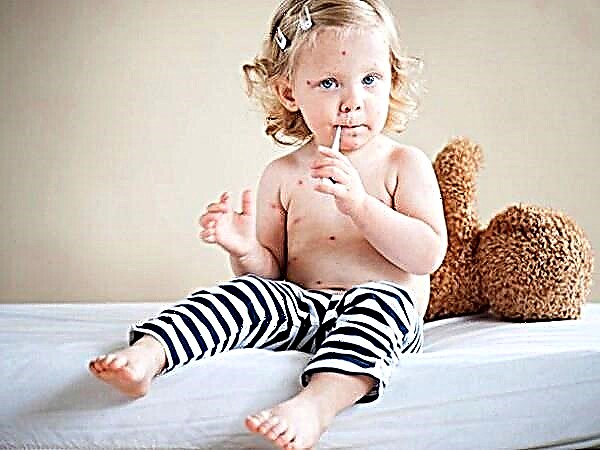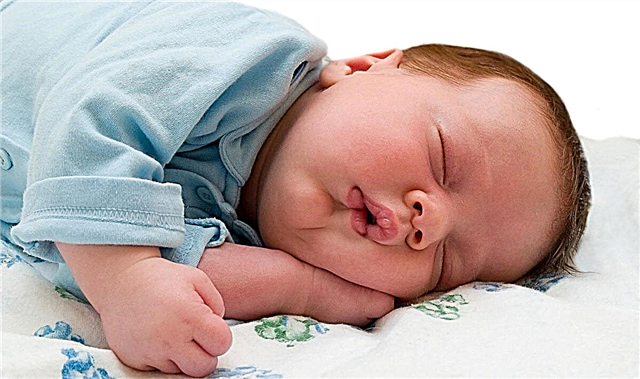
Modern women dye their hair as easily as they do morning makeup. This has become the norm. But during the period of bearing a child, women become more suspicious, restless, and there is nothing surprising in the fact that a reasonable question arises - is the coloring dangerous, because the cosmetics intended for this often have an unbearable pungent smell and a composition saturated with chemicals.

Why is it dangerous?
In the body of the expectant mother, from the first days after conception to the very birth, there are many changes - from external and obvious to everyone to invisible, internal, which relate to changes in hormonal levels and metamorphoses with metabolic processes.
It is the ratio of progesterone - a pregnancy hormone to estrogens - female sex hormones that determines the condition of the future mother's hair. Moreover, in different trimesters of pregnancy, this effect is different.
- First trimester. The body is dominated by progesterone and chorionic gonadotropin. This combination of hormones does not improve the quality of women's hair. If at the same time a woman suffers from severe toxicosis, then the hair becomes thinner due to the lack of trace elements and vitamins, they become drier, brittle, dull.
- Second trimester. Relief comes, the state of health noticeably improves, but the fetus's need for calcium increases due to the onset of mineralization of the bones of the child's skeleton. If there is not enough calcium, the condition of the hair will become completely deplorable. If, on time, add calcium-rich foods to the diet, then the condition of the hair begins to improve - by the middle of the trimester, they are usually shiny and strong.
- Third trimester. The fetus is actively growing and gaining weight, growth hormones are produced, which also affect the growth rate of mother's hair - they begin to grow faster, which is especially noticeable on dyed hair, the roots of which are rapidly growing back. By the end of the trimester, estrogen levels rise.

In any of the trimesters, a woman has a question whether it is possible to dye her hair if it has lost color, shine, or has grown excessively. To answer this question, there are several important factors to consider.
- The effect of the chemical composition of hair dye products has not been studied in clinical trials, and therefore the effect on the fetus is not known for certain. When such a situation arises, doctors "by default" recommend to give up what works in an unknown and non-obvious way. This is the reason for most of the prohibitions on hair dyeing. At the same time, doctors do not deny the possibility of staining with natural remedies, for example, henna.
- In the first trimester, the organs and systems of the fetus are laid, and any negative factor can disrupt subtle cellular processes, and therefore the prohibition on staining in the first third of the gestation period of the baby looks quite reasonable and justified.
- There is a significant disadvantage in paints with ammonia dyes - they smell sharply unpleasant, badly affect the state of the respiratory system. All cosmetics with ammonia in the composition must be excluded during the carrying of a child, and the staining itself should be carried out only in a room that is well ventilated.
- During pregnancy, immunity significantly decreases and metabolism changes, and therefore, when carrying out a seemingly familiar hair coloring procedure the likelihood of developing a severe allergic reaction increases. An inadequate immune reaction is quite capable of developing even to dye, with which a woman quite happily dyed her hair for a long time before pregnancy.
- Due to global endocrine metamorphosis the effect of staining can be completely unexpected - in particular, the color does not always turn out to be the one that was declared. The paint can lie unevenly - specks, stripes.

In general, the harm and benefits of staining while waiting for the child should be considered on an individual basis. You can dye your hair, but not with all formulations and not for all pregnant women. For example, with a severe deterioration in the condition of the hair due to pregnancy, you should not aggravate their already deplorable condition by coloring.
Studies conducted by specialists from the Medical Academy of Southern California have shown that the risk of developing cancer is almost three times higher in women who dye their hair more than 5 times a year. As for the effect on the fetus, there are still many questions. It is known that substances from the composition of paints can theoretically penetrate the placental barrier, but only if they are present over a large area and are in contact with a woman's skin for a long time.
The presence of ammonia in a cosmetic product can lead to severe headaches, nausea, and vomiting. Hydrogen peroxide in the composition of the product can cause chemical burns of mucous membranes, and also act as an allergen. Parabens cause inflammation of the nasopharynx. Dihydroxybenzene, being a variant of phenol, has properties to accumulate in the body and act as a toxin. Phenylenediamine has a toxic effect on the kidneys, lungs, and immunity. Persulfates are hazardous to the respiratory system. Lead acetate is toxic to the brain and nervous system, and is especially dangerous to the nervous system of the fetus. Both formaldehyde and ethanolamine, which can be found in at least half of hair dyes, are dangerous.
If you dye your hair without affecting the scalp (there are such techniques), then the risk to the fetus can be minimized.


Contraindications
In early pregnancy up to 13 weeks inclusive, it is not recommended to dye your hair at all. This is the period of organogenesis, when all organs and systems are formed in the fetus. The opinion of doctors on this matter is unequivocal - if a possible risk factor can be avoided, it is better to avoid it without endangering the child. The period up to 10 weeks inclusive is especially dangerous. But during the entire first trimester, it is better to refrain from such experiments. Nobody says that it is forbidden to paint, no one puts strict prohibitions, but all doctors indicate that it is at least harmful and at most dangerous.
The second trimester does not imply such a rigid framework, and a woman, if necessary, can use hair coloring, but with the use of gentle ammonia-free paints. The third trimester is divided into two conditional periods - at the beginning from week 27 to week 34, staining is allowed, provided that precautions are taken, but after this period, the placenta begins to age rapidly, its barrier functions decrease, and therefore staining at a later date, in the last weeks of 9 months pregnancy is again not recommended.

You should not dye your hair during the period of bearing the baby for women who suffer from various forms of allergic reactions, as well as women with a history of endocrine diseases.
How to reduce the risk?
All of the above does not mean at all that a woman needs to walk with unkempt roots and look forward to giving birth in order to finally put her appearance in order. Precautions will help reduce potential risks:
- carry out staining from the second trimester of pregnancy, not earlier;
- do not dye your hair too often, the recommended frequency of the procedure is 1 time per trimester;
- for staining, choose semi-professional paints or natural dyes - they, of course, are less persistent, but also less harmful;
- you should not choose the cheapest dyeing products - in cheap paints there are often salts of heavy metals hazardous to health;
- carefully examine the paint packaging and familiarize yourself with the composition - if ammonia, dihydroxybenzene, aminophenol and phenylenediamine, formaldehyde and other toxic substances listed above are found in it, refuse to buy such a product.
The best option for the expectant mother would be an organic coloring procedure.
This procedure is not the cheapest, but safer, since it uses cosmetics that are 90% natural.
When contacting a beauty salon, be sure to inform the master about your "interesting" position. An experienced specialist will certainly take this into account when choosing a coloring agent. If the beauty salon is not in the plans and the woman is going to dye her hair on her own, it is important to carefully re-read the instructions attached to the paint so as not to overexpose the product on the hair for more time than provided by the manufacturer.
When dyeing, be sure to wear gloves to exclude contact of the skin of your hands with the dye. An allergy test, which is often neglected by women, should be performed without fail during pregnancy, because even paint that did not cause harm before can become an allergen during gestation. The test is easy, this task can be dealt with without special medical knowledge: dilute a little of the composition, apply to the back of the hand, hold for 20 minutes, rinse and observe for an hour - if the application site is not reddened, swollen, not covered with rashes, then you can paint with this tool.
Remember to provide good ventilation in the area where you will be dyeing your hair. You can also additionally use a gauze bandage or pharmacy respirator to protect the respiratory system.

Among the dyeing methods, it is worth paying attention to more gentle balayazh, coloring, highlighting and ombre - with them there is no need to apply paint directly from the roots over a large area, which will exclude paint contact with the scalp.
What can you paint with?
Choosing a safe staining method is half the battle. On store shelves, you can find a variety of products for changing hair color, and this only complicates the choice of a future mother. Different henna options are perfect for brunettes and redheads. You can also use a decoction of the most common pharmacy chamomile or oak bark, basma.
Pay attention to tint tonics, shampoos and balms - they do not provide a long lasting effect from coloring, but they will also be least harmful. You can use such products more often than hair dyes, and therefore a woman can maintain her hair in a tidy condition without problems. The downside is that the coloring component is so weak and unstable that it can leave ugly color stains on the collar of a shirt or blouse, on a pillow, or on a hat until it is washed off the hair.
Natural herbal remedies don't tolerate inaccuracies. Evaluate the main hair color to try to "match".
A decoction of chamomile pharmacy for brunettes and brown-haired women is not suitable at all, on dark hair it will be indistinguishable, but for fair-haired fair-haired women it gives a golden hue and a mild lightening effect. Blondes you can consider lemon juice. It lightens and dries too oily hair a little (women most often suffer from oily hair in the third trimester of pregnancy due to increased production of estrogen).
Brunettes oak bark is suitable. If you brew a strong broth, then you can profitably shade brown hair and give it a golden hue.
Brown-haired you can also cope with the task with the help of a well-known natural dye, which is used to color eggs for Easter - onion skins. When combined with black tea brewing, the husk will give a golden chestnut color.
Basma will be useful for brown-haired women and brunettes, and natural henna for redheads. A decoction of walnut shells will give a chestnut-copper hue.
The most difficult thing is for blondes with regrown roots - lightening agents are undesirable. You will need to either repaint with a tint shampoo in the color of the regrown roots, or wait with the color correction of the roots until the postpartum period.
Organic staining is carried out with products that consist of at least 9/10 natural ingredients. When choosing an ammonia-free paint, it should be understood that such a coloring agent will have both its pros and cons. Undoubtedly, the absence of ammonia relieves a woman from the need to inhale unpleasant vapors of chemical origin. Such paints have a more delicate effect on the structure of the hair, they have natural shades, they lay down evenly. But at the same time, they do not guarantee long-lasting color, and they are quite expensive.
It is important to know that the absence of ammonia in itself is not a guarantee of the safety of the product, because in the paint belonging to the category of ammonia-free, other chemicals may well be present, the action of which is difficult to call useful.
And this makes it difficult to use during pregnancy: in order to maintain color, coloring with ammonia-free products must be carried out quite often, and some components of such paints can be not harmless.
It is difficult to unequivocally answer the question of which paints are acceptable for use during pregnancy, but women's reviews show that most often expectant mothers choose means such as:
- Garnier "Color Shine";
- Estel Professional "Deluxe Sense";
- SanoTint;
- Wella "Color Touch";
- Schwarzkopf "Perfect Mousse";
- Matrix;
- L'Oreal "Casting Creme Gloss";
- Schwarzkopf "Essential Color".
Important! If a woman had never dyed her hair before pregnancy, then the period of bearing a child is not the best time to start experimenting with appearance.
This procedure is rather a forced measure, and therefore it is better not to start painting at this time. Also, cardinal repainting from blonde to burning brunette or vice versa is not recommended.
For information on whether you can dye your hair during pregnancy, see the next video.



